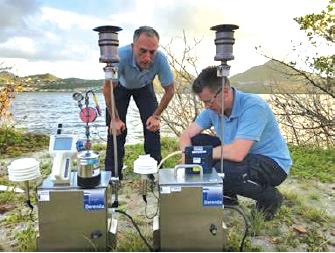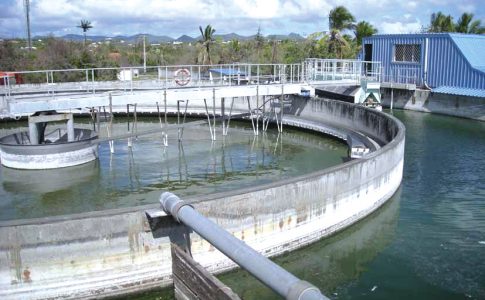The Philipsburg landfill is worrying the population about the consequences of its management on the public health of local residents. The burial of the waste continuously causes combustion inside the landfill, but regularly it is also the surface which catches fire, creating a thick black smoke visible on both sides of the island.
From January 24 to February 6, 2019, measurements were taken around Pond Island to study air quality.
RIVM (Dutch National Institute for Public Health and the Environment), an independent institute in the Netherlands mandated by the VROMI ministry, led these measures, funded by the government of the Netherlands with funds allocated to the reconstruction of Sint Maarten.
They had to determine the potential risks to public health caused by the numerous fires on the surface of the landfill that occurred during the year 2018. Unfortunately, the scientists conducted their experiment over a period of two weeks during which no fire of this guy never declared himself at the landfill. The RIVM was therefore unable to establish the potential health risks when the landfill was on fire. "In the event of a new fire, the firefighters could carry out measurements and samples and request the assistance of RIVM" indicates the government of the Dutch side.
The measurements were taken between 500 and 2500 meters from the landfill, but not inside, unlike a study carried out in 2018 by the company EE&G directly on the landfill site. The objective of this first study was also to define the possible health risks caused by the fumes. While it was aimed at people working in the landfill, the most recent focuses on the people living around the landfill, and in particular, the quality of the air they breathe on a daily basis.
The aim was to identify the following substances: fine particles (PM10), inorganic gases, volatile organic components, aldehydes, polycyclic aromatic hydrocarbons (PAHs), dioxins and polychlorinated biphenyls ("PCBs"). In the 206 samples taken by the RIVM, a representative selection of 90 samples was analyzed in specialized laboratories.
In some cases, in measurements made by the RIVM, it was found that the concentrations of aluminum and possibly chromium exceeded the standards in force if people were to breathe these substances continuously throughout their lives. . For PAHs, some samples exceeded the applicable standards if these substances were ingested daily during the lifetime. "However, the health effects of these exceedances are negligible and it cannot be concluded with certainty that these exceedances are caused by emissions from underground fires or the slow burning of the landfill, as there are other sources as well. possible from these emissions, like cars and buses, ”reports the government.
The odor nuisance experienced by people living around the landfill can cause discomfort such as nausea and headaches. However, while the RIVM report indicates that deep burning of the landfill poses little or no risk to the health of the population, the VROMI ministry recognizes that smoke from open fires can present some. The RIVM was unable to determine the specific risks associated with open-air fires in the landfill. However, the VROMI ministry ensures "to seek to structurally improve the management of the landfill and to continually take measures to prevent fires in open landfills and, if necessary, to ensure that they are extinguished as soon as possible".
(Source SoualigaPost).
6,636 total views






No comments